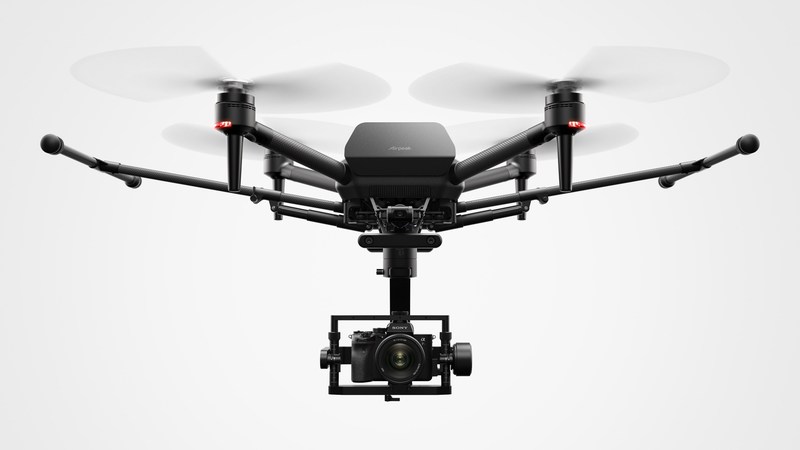Sony has fully unveiled the Airpeak S1, a professional drone that will be released in Spring with a massive price tag of US$9K ($11,680) excluding a gimbal.

When Sony announced its foray into the drone market, the speculation was whether it may seriously challenge DJI’s secure position as the consumer drone market leader. Could Sony use a similar game-changing strategy that left DSLRs looking outdated compared with full-frame mirrorless cameras?
But this Sony Airpeak S1 ain’t no consumer drone – look no further than the price tag. So don’t expect one to be noisily hovering overhead next summer while out and about – it’s probably just another DJI!
While the Airpeak S1 is a niche product for cinematographers, entering the commercial drone market may be a wiser decision than going toe-to-toe with DJI in the consumer space. According to an Australian Government paper commercial drone use was expected to grow by 380 percent between 2018 – 2022, while consumer drones are only projected to have a 42 percent increase.
DJI has upped the ante with its commercial drone offerings, but hasn’t quite got the same market leadership on the market as it does with consumer drones. So there’s perhaps plenty of room for Sony to enter this growing market, compared with the consumer drone zone which has apparently reached its plateau.
So onto the Airpeak S1.
It’s the ‘world’s smallest’ drone that can handle a full-size mirrorless Alpha camera. Sony lists the compatible cameras as including the a7S series, FX3 cine camera, a7R series, A9, and A1. There is no information as to whether it can carry cameras by other brands, but this seems to imply it.
Including a camera the Airpeak S1 weighs a nimble 2.53KG. It doesn’t quite fall under the Civil Aviation Safety Authority’s (CASA) sub-2KG range and all operators will be required to have a licence.
It has a maximum speed of 90km/h, with acceleration from 0-80km/h in 3.5 seconds, and it can resist wind speeds of up to 72 km/h by using a ‘combination of Sony developed key devices’. It also has a maximum angular velocity of 180°/s, and a maximum tilt angle of 55°.
Sony didn’t include the S1’s maximum flight time in its press release. At just 12 minutes with camera, or 22 minutes without a camera, it’s no surprise this pertinent detail was not a highlight feature.
Five stereo cameras equipped with Sony sensors appear on all sides of the drone, including an infared range-finding sensor on the top, to detect obstacles. This allows the S1 to ‘automatically decelerate and stop according to the behaviour of the aircraft and the surrounding conditions’.
The drone also has a Vision Sensing Processor which uses ‘proprietary algorithms’ to estimate the drone’s spatial position and orientation. This enables stable flight in environments where the GNSS (Global Navigation Satellite System) reception is hindered. A flight control system also integrates sensor information, such as IMU (Inertial Measurement Unit), direction, barometric pressure and infared ranging to optimises propulsion.
Operating the drone requires an Apple device with the Airpeak Flight application, which serves as a control for the aircraft, transmitter, camera and gimbal. There is also a dual operation mode whereby one person operates the drone and the other control the gimbal. The drone has a tilt-operated FPV (First Person View) camera mounted on the drone’s nose for the purpose of monitoring the direction of the aircraft and direction of travel.
Sony has also designed a logistics web app, Airpeak Base, so an operator may manage equipment, create flight plans, and manage flights logs.
‘With Airpeak Base, the operator can create advanced flight plans and automatically fly the aircraft along the same course repeatedly, as if the drone were on rails installed in the air,’ the press release says. ‘It is able to set the position (latitude, longitude and altitude) and speed of the aircraft along the timeline, and specify the orientation of the gimbal and the timing of video or still image shooting. It can also draw smooth curves on the map. Reproduction flight is an automatic flight function that reproduces the flight route, gimbal, and camera movements based on the flight logs that have flown in the past.’
According to TechRadar Sony has partnered with gimbal producer, Gremsy, to manufacture a custom gimbal. This will be sold separately, and apparently for $2260.





Be First to Comment